Storms ahead for Transatlantic Race
Published on June 25th, 2019
Newport, RI (June 25, 2019) – At 1600 hours ET, four and a half hours after the final start of the Transatlantic Race 2019, the fleet of 13 yachts was south of Martha’s Vineyard and was beating in 15 to 20 knots of south/southeasterly wind towards the first virtual mark south of Nantucket Shoals, led by the three largest boats, SHK Scallywag (Dovell 100), Wizard (Juan K VO70), and Aegir (Rogers 82).
The fleet was reduced to 13 yachts this afternoon when Fearless, the Baltic 55, withdrew due to troubles with the water maker.
Based on weather forecasts, the race is shaping up to be a long one for the 120 sailors competing in the 2960nm race to Cowes on the Isle of Wight in England. Tonight is forecast to be very wet as a front clears off the East Coast of the U.S., followed by light winds with the likelihood of the fleet compressing around Point Alpha, the ice zone limit.
The line-honors winner might be eight or nine days on elapsed time, well outside the 6-day, 22-hour record. In fact, the first night might be the hardest of the race.
“If we live through this afternoon’s thunder and lightning, very frightening stuff, it gets very light tomorrow as the front moves away,” said Mike Broughton, navigator of Aegir. “We need to keep under the rain today to keep moving. Overall, we’re looking at a pretty unconventional race with light winds early next week and plenty of winds ahead of the beam.”
The three classes got underway between 1110 and 1130 hours, as scheduled and without incident. With the start line extending from Newport’s iconic Castle Hill Light, a southerly wind of 10 knots propelled the racers out of Narragansett Bay.
A few boats started on port tack, but by the time everyone could clear Brenton Reef they were all on starboard tack and making an east/southeasterly course towards the first virtual mark south of Nantucket Shoals.
Laurent Pagès, the project manager for Eric de Turkheim’s Nivelt/Muratet 54 Teasing Machine, noted the complexity of the racecourse that lies ahead.
“It’s going to be a long race, hopefully the second half gets faster than predicted,” said Pagès, who won the 2011-12 Volvo Ocean Race aboard Groupama 4. “Our focus is to get a good start and do the right things to kick off from Newport. I think we’ll have a clear idea what kind of situation we’ll have in a few days.
“Every boat has its strengths, and we’ll have varying conditions with key strategical calls to make,” Pagès continued. “There’s the Gulf Stream, situations with high-pressure systems… many things to play with. It’s going to be very challenging tactically.”
The past few days have seen frantic preparations for many of the racers. Jean-Pierre Dick has two new crew aboard The Kid (Verdier JP54) who’ve never raced trans-Atlantic before, which had him concerned for safety. Meanwhile, Joe Mele’s Triple Lindy (Cookson 50) was in and out of the water five times over the span of three days, according to navigator H.L. DeVore.
“I think Joe was unaware that walking under a ladder is bad luck. We finally stopped him a few days ago,” joked DeVore, an experienced navigator competing in his first trans-Atlantic race. “We’ve had all kinds of challenging, last-minute preparations: modifications to the rudder bearings, new parts for the satellite phone, even smoke in the engine. We’re happy to be tested and sorting this stuff out now rather than in the middle of the ocean.”
Aboard the J/52 True, co-skipper Ryan Hughes was also busy with last-minute preps. Hughes, 29 years old, has crossed the Atlantic four times, but is racing for the first time.
“It’s been a mission to get ready,” said Hughes. “We had to replace the hydraulics for the boom vang and backstay, so have spent some time dialing in those systems. But the boat’s up for the challenge. It’s been to the Caribbean and back and has raced the Newport-Bermuda Race. It’s been put through the ringer.”
On Mark Stevens’ McCurdy 49 Kiva, a repeat entry from the 2015 Transatlantic Race, navigator Hank Halstead showed his unbounded exuberance when talking about the race ahead.
“We’ve got a marvelous crew,” said Halstead. “This is a boat that Mark and I have always sailed doublehanded for the past 20 years. Our only race fully crewed was the Transatlantic Race 2015 four years ago. It’s pretty much the same crew back. The experience level is over the top. I’m stoked. It’s looking like we’ll eat some salt the first few days and then some drifting. I can handle that.”
The Transatlantic Race 2019 is organized by the Royal Yacht Squadron, New York Yacht Club, Royal Ocean Racing Club and Storm Trysail Club. It is the 31st Transatlantic Race organized by the New York Yacht Club.
Event details – Crew list – Tracker – Boat blogs
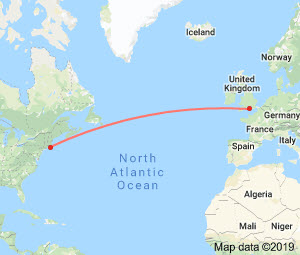 Background: The Transatlantic Race 2019 started June 25 for the 2,960-nautical-mile course from Newport, R.I., to Cowes, England.
Background: The Transatlantic Race 2019 started June 25 for the 2,960-nautical-mile course from Newport, R.I., to Cowes, England.
The race is organized by the Royal Yacht Squadron, the New York Yacht Club, the Royal Ocean Racing Club and the Storm Trysail Club.
Pre-start activities will take place at the New York Yacht Club’s Harbour Court clubhouse in Newport, while awards will be presented at the Royal Yacht Squadron’s Cowes Castle clubhouse on the Isle of Wight.
The race is a direct descendant of the first great transatlantic ocean race, which started from New York Harbor on December 11, 1866. The 2019 edition will be the 31st transatlantic race organized by the New York Yacht Club with the fleet to start off Castle Hill Lighthouse.
Source: New York Yacht Club


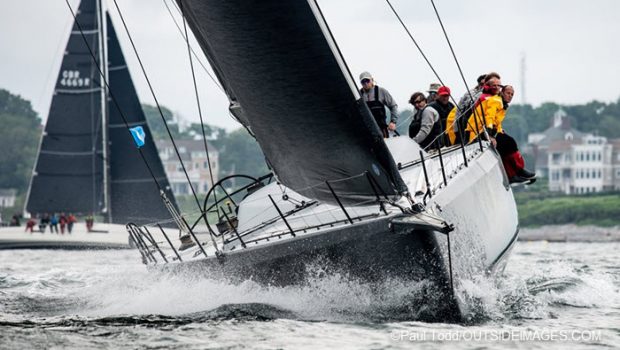


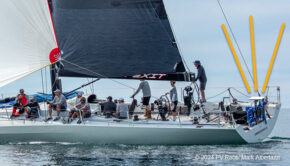
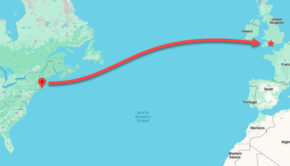
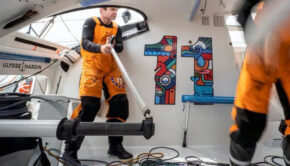
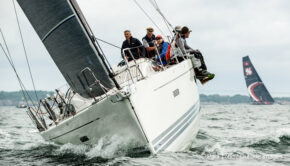
 We’ll keep your information safe.
We’ll keep your information safe.